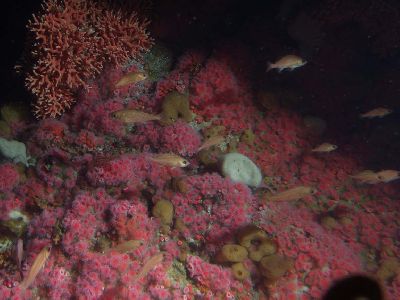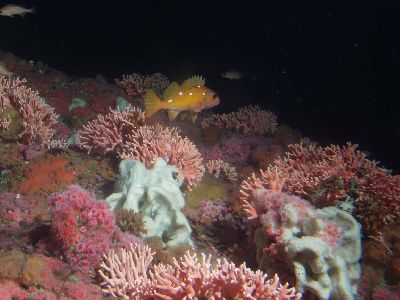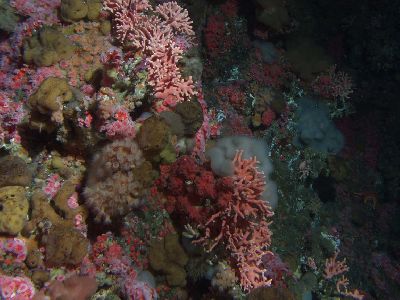NOAA Ship McArthur II
On Monday I sent a quick email to the NOAA Ship McArthur II, inquiring about their operations when we saw them Saturday evening and Sunday morning. I just received a very nice email from McArthur II’s Executive Officer, Demian Bailey:
——————————
The NOAA Ship McArthur II was working with government researchers from the Cordell Bank National Marine Sanctuary surveying various oceanographic parameters in this sensitive ecological area in order to help the Sanctuary managers better protect the area. I’ve attached a short summary that describes the Cordell Bank and briefly what the purpose of our research was.
When you saw us on Saturday night, I was on watch and saw your mast light. It was just barely visible from 5 miles in clear conditions. At that time we were doing small net tows looking for plankton.
——————————
It is good to hear that our tricolor was visible from 5 miles, which is well in excess of the requirements.
From Mr. Bailey’s attached summary:
——————————
Cordell Bank National Marine Sanctuary was designated in 1989 to protect the rich biological community in the area and to prevent oil and gas drilling offshore of California within this region. The centerpiece of the Sanctuary is Cordell Bank, a rocky reef feature that was actually formed in southern California as part of the Sierra Nevada mountain range, and then was transported north to its current position due to the movement of the Pacific Plate relative to the North American Plate. The complexity of the Bank provides diverse habitats for an abundant seafloor community, including a vast number of rockfish and carpets of invertebrates including sponges, anemones, deep water corals and tunicates that compete for space on the rocky pinnacles (see pictures). The shallowest depth of the Bank is 35 meters. The position of the Bank close to the deep waters of the continental slope (drops to 1000 meters in just a few kilometers) causes conditions favorable for increased upwelling of nutrients from deep waters to the surface, where phytoplankton utilize these for growth. This abundance of phytoplankton in turn leads to an abundance of krill and other zooplankton, which make this region a feasting ground for lots of fish, birds, and marine mammals.
The goal of the current project headed by PRBO Conservation Science is to understand the relationship between oceanographic conditions (including upwelling) and the distribution and abundance of krill and their predators within the region of Cordell Bank and Gulf of the Farallones Sanctuaries.
Some images of the upper pinnacles of Cordell Bank.


